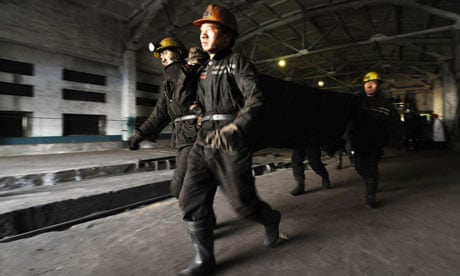A gas explosion in a Chinese coalmine has killed at least 73 workers, with dozens more trapped underground in the still-burning shaft.
The blast occurred before dawn today while 436 workers were in the Tunlan mine at Gujiao city in the northern province of Shanxi, the official Xinhua news agency said.
Of the survivors, 113 were hospitalised, including 21 in critical condition. Reports said at least 65 were still underground.
CCTV, the state television station, showed rescuers in orange suits and red helmets with headlamps entering an elevator to be lowered into the mine shaft, while others emerged from the mine carrying workers on stretchers toward waiting ambulances.
Nearly 100 rescuers were onsite but their work was hampered by the fire, CCTV said.
The injured miners had carbon monoxide poisoning, Xinhua reported, quoting doctors at a nearby hospital. The odourless, colourless gas is deadly if there is high or prolonged exposure.
The mine is owned by Shanxi Coking Coal Group, one of China's largest producers of coking coal used to make steel. The company operates 28 mines.
No accidents had been reported at the Tunlan mine in the past decade, Xinhua said. It produces 5m tonnes of coking coal a year.
China has worked to cut accidents by closing more than 1,000 dangerous small mines last year, but its mining industry is still the world's deadliest, killing about 3,200 people last year, a 15% decline from the previous year.
Large state-run mines tend to have safety records nearing those of developed countries, while smaller mines have little or no safety equipment or worker training.
Government figures show that almost 80% of China's 16,000 mines are small illegal operations.
